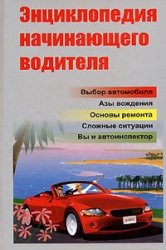Rolf Eckhoff0750676027, 9780750676021, 9780080488745
Table of contents :
Cover……Page 1
Half Title Page……Page 4
Title Page……Page 6
Copyright……Page 7
Table of Contents……Page 10
Foreword……Page 20
Prefaces……Page 22
1.1 The Nature of Dust Explosions……Page 28
1.2 Significance of the Dust Explosion Hazard: Statistical Records……Page 47
1.3 Dust and Dust Cloud Properties that Influence Ignitability……Page 52
1.4 Means for Preventing and Mitigating Dust Explosions……Page 84
1.5 Selecting Appropriate Means for Preventing and Mitigating Dust Explosions……Page 148
2.2 The Explosion in a Flour Warehouse in Turin on December 14, 1785……Page 184
2.3 Grain Dust Explosions in Norway……Page 187
2.4 Four Grain Dust Explosions in United States, 1980-1981 (Source: Kauffman and Hubbard, 1984)……Page 193
2.5 A Dust Explosion in a Fish Meal Factory in Norway in 1975……Page 200
2.6 Smoldering Gas Explosion in a Silo Plant in Stavanger, Norway, in November 1985……Page 204
2.7 Smoldering Gas Explosions in a Large Storage Facility for Grain and Feedstuffs in Tomylovo, Knibyshev Region, USSR……Page 205
2.8 Smoldering Gas Explosion and Subsequent Successful Extinction of Smoldering Combustion……Page 208
2.9 Linen Flax Dust Explosion in Harbin Linen Textile Plant, Peoples Republic of China, in March 1987……Page 209
2.10 Fires and Explosions in Coal Dust Plants……Page 214
2.11 Dust Explosion in a Silicon Powder Grinding Plant at Bremanger, Norway, in 1972……Page 217
2.12 Two Devastating Aluminum Dust Explosions……Page 219
3.1 Background……Page 226
3.2 Structure of the Problem……Page 227
3.3 Attraction Forces between Particles in Powder or Dust Deposits……Page 229
3.4 Relationship between Interparticle Attraction Forces and Strength of Bulk Powder……Page 233
3.5 Dynamics of Particles Suspended in a Gas……Page 240
3.6 Dislodgement of Dust Particles from a Dust or Powder Deposit by Interaction with an Airflow……Page 248
3.7 Dispersion of Agglomerates of Cohesive Particles Suspended in a Gas by Flow Through a Narrow Nozzle……Page 259
3.8 Diffusion of Dust Particles in a Turbulent Gas Flow……Page 261
3.9 Methods for Generating Experimental Dust Clouds for Dust Explosion Research……Page 266
4.1 Ignition and Combustion of Single Particles……Page 280
4.2 Laminar Dust Flames……Page 294
4.3 Nonlaminar Dust Flame Propagation Phenomena in Vertical Ducts……Page 347
4.4 Turbulent Flame Propagation……Page 354
4.5 Detonations in Dust Clouds in Air……Page 396
5.1 What is Ignition?……Page 416
5.2 Self-Heating and Self-Ignition in Powder Deposits……Page 419
5.3 Ignition of Dust Clouds by Electric Spark Discharges between Two Metal Electrodes……Page 435
5.4 Ignition of Dust Clouds by Heat from Mechanical Rubbing, Grinding, or Impact between Solid Bodies……Page 450
5.5 Ignition of Dust Clouds by Hot Surfaces……Page 454
6.1 Some Vent Sizing Methods Used in Europe and the United States……Page 462
6.2 Comparison of Data from Recent Realistic Full-Scale Vented Dust Explosion Experiments with Predictions……Page 466
6.3 Vent Sizing Procedures for the Present and Near Future……Page 483
6.4 Influence of Actual Turbulence Intensity of the Burning Dust Cloud on the Maximum Pressure in a Vented Dust Explosion……Page 488
6.5 Theories of Dust Explosion Venting……Page 489
6.6 Probabilistic Nature of the Practical Vent Sizing Problem……Page 496
7.1 Historical Background……Page 504
7.2 A Philosophy of Testing the Ignitability and Explosibility of Dusts: The Relationship between Test Result……Page 506
7.3 Sampling of Dusts for Testing……Page 508
7.4 Measurement of the Physical Characteristics of Dusts Related to Their Ignitability and Explosibility……Page 510
7.5 Can Clouds of the Dust Produce Explosions at All? Yes/No Screening Tests……Page 519
7.6 Can Hazardous Quantities of Explosible Gases Evolve from the Dust During Heating?……Page 521
7.7 Ignition of Dust Deposits and Layers by Self-Heating or Hot Surfaces……Page 524
7.8 Minimum Ignition Temperature of Dust Clouds……Page 530
7.9 Minimum Electric Spark Ignition Energy of Dust Layers……Page 536
7.10 Minimum Electric Spark Ignition Energy of Dust Clouds……Page 539
7.11 Sensitivity of Dust Layers to Mechanical Impact and Friction……Page 544
7.12 Sensitivity of Dust Clouds to Ignition by Metal Sparks, Hot Spots, or Thermite Flashes from Accidental Mechanical Impact……Page 546
7.13 Minimum Explosible Dust Concentration……Page 549
7.14 Maximum Explosion Pressure at Constant Volume……Page 556
7.15 Maximum Rate of Rise of Explosion Pressure at a Constant Volume (Explosion Violence)……Page 564
7.16 Efficacy of Explosion Suppression Systems……Page 567
7.17 Maximum Explosion Pressure and Explosion Violence of Hybrid Mixtures of Dust and Gas in Air……Page 570
7.19 Influence of Oxygen Content in the Oxidizing Gas on the Ignitability and Explosibility of Dust Clouds……Page 571
7.20 Influence of Adding Inert Dust to the Combustible Dust on the Ignitability and Explosibility of Dust Clouds……Page 573
7.21 Hazard Classification of Explosible Dusts……Page 574
8.1 Introduction……Page 580
8.2 Classification of Areas Containing Combustible Dusts……Page 584
8.3 Why Different Electrical Apparatus Design Criteria are Needed for Areas with Combustible Dust……Page 588
8.4 Enclosing Potential Ignition Sources to Prevent Hazardous Ingress of Dust……Page 591
8.5 Intrinsically Safe Electrical Apparatuses……Page 599
8.6 Summary and Conclusions……Page 605
9.1 Introduction……Page 611
9.2 Status and Outstanding Problems in Fundamental Research on Dust Explosions……Page 613
9.3 Status and Outstanding Problems in Preventing and Mitigating Dust Explosions in Industry……Page 641
9.4 Status and Outstanding Problems in Testing Dust Ignitability and Explosibility……Page 667
9.5 Dust Explosion Statistics and Case Histories……Page 672
9.6 Expert Systems: Friend or Enemies?……Page 674
9.7 Joint Research Efforts in Europe……Page 676
9.9 Conclusions……Page 677
Appendix: Ignitability and Explosibility Data for Dusts from Laboratory Tests……Page 712
Index……Page 736
Back Cover……Page 754







Reviews
There are no reviews yet.